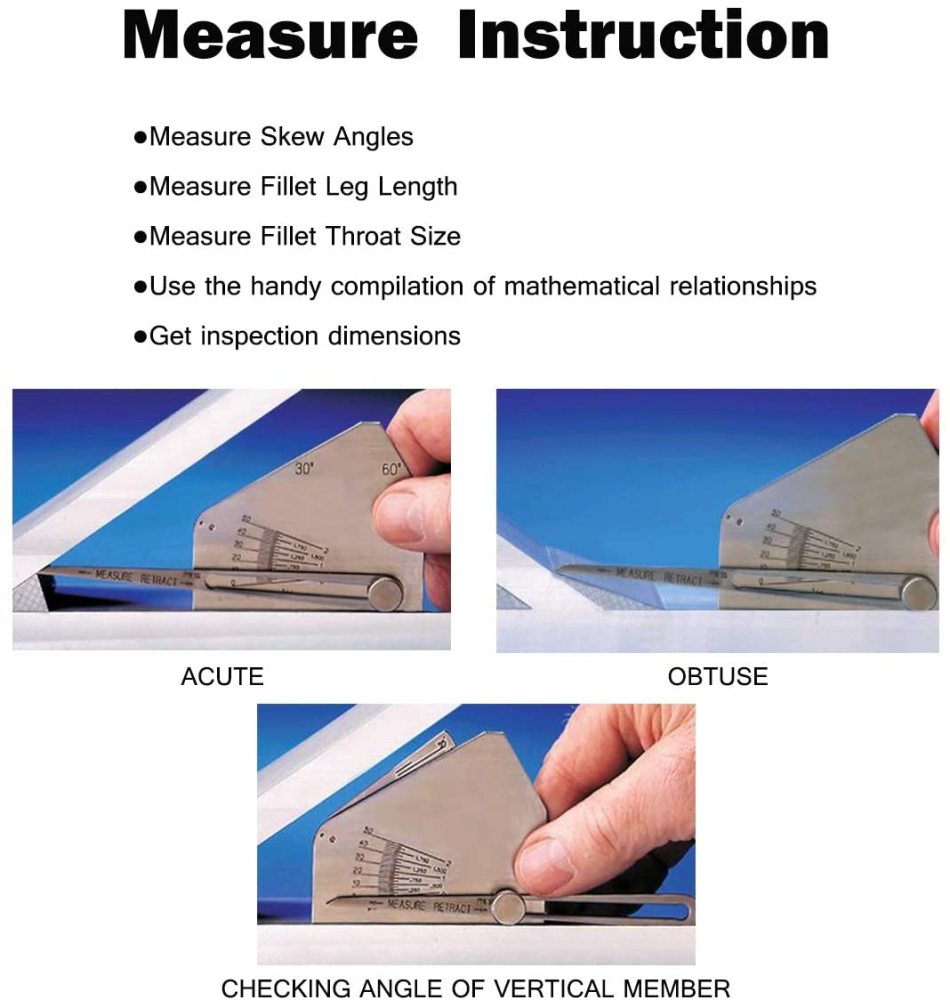Grasping Gauge Fillet Welds: Tips for Perfect Measurements and Implementation
Grasping Gauge Fillet Welds: Tips for Perfect Measurements and Implementation
Blog Article
Fillet Weld Style Strategies: Enhancing Joint Efficiency and Looks for Structural Integrity
In the world of structural engineering and fabrication, the importance of fillet weld design strategies can not be overemphasized. By meticulously taking into consideration factors such as weld account optimization, product choice, joint preparation methods, welding procedure efficiency, and aesthetic enhancement methods, producers and designers can attain a harmonious balance between capability and appearance in their bonded structures.
Weld Account Optimization


Achieving an optimal weld profile involves a careful factor to consider of variables such as material thickness, joint setup, welding setting, and preferred welding speed. Furthermore, the selection of proper welding parameters, such as voltage, present, and take a trip speed, is fundamental in managing the form and dimensions of the fillet weld. Making use of advanced welding methods, such as pulse welding or robot welding, can additionally improve the weld profile to satisfy details layout requirements and quality criteria.
In significance, weld account optimization is a fundamental facet of fillet weld layout that straight affects the overall performance and reliability of bonded joints in structural applications.
Material Choice Considerations
When taking into consideration product selection for fillet weld layout, the compatibility of the base steels is a crucial factor influencing the structural integrity of the joint. It is essential to pick products that not only weld together effectively but also have similar mechanical buildings to ensure the lots is equally distributed in between the base and the weld steels. Welding materials with vastly different properties can result in problems such as anxiety focus, premature joint failure, or breaking.
Additionally, the environment in which the welded structure will certainly run need to be taken right into account when selecting products. Aspects like corrosion resistance, temperature variations, and direct exposure to chemicals can all impact the long life and performance of the weld joint. By picking products that appropriate for the designated application and setting, the general resilience and reliability of the welded joint can be substantially enhanced.
As a result, comprehensive consideration of product compatibility and environmental aspects is extremely important in ensuring the weld joint's stamina, longevity, and total architectural integrity.

Joint Prep Work Techniques
Taking into consideration the vital function product choice plays in making certain the structural integrity of fillet weld joints, it is crucial to apply accurate joint prep work strategies that optimize the connection between the base metals. Joint preparation is a vital action that directly influences the high quality and stamina of the weld.
Moreover, correct fit-up of the joint is necessary to ensure consistent circulation of the welding material and avoid problems like incomplete penetration or excessive buildup. Beveling the sides of the base steels can develop a groove that permits for much deeper weld infiltration and a stronger bond. Additionally, tack welding the components in position prior to the last weld assists preserve positioning and lessens distortion during the welding procedure. By carefully following these joint preparation techniques, welders can improve the total efficiency and appearances of fillet weld joints while making certain architectural sturdiness.
Welding Process Efficiency
Reliable welding processes are vital for accomplishing optimum productivity and high quality in fillet weld construction. Procedures like gas metal arc welding (GMAW) and flux-cored arc welding (FCAW) are typically used for fillet welds due to their convenience and speed.
Regular calibration of welding devices, evaluation of consumables, and maintenance of welding torches can avoid downtime and rework, ultimately directory conserving time and sources. Trained welders are a lot more skilled at readjusting specifications, fixing issues, and maintaining regular weld top quality.
Visual Enhancement Methods
To maximize the high quality of fillet weld fabrication, applying visual improvement techniques can play a vital function in guaranteeing accuracy and accuracy throughout the welding process. Aesthetic enhancement approaches incorporate numerous techniques intended at improving the look and quality of fillet welds. One usual method is using back purging systems to remove oxidation on the backside of the weld, causing a cleaner, much more cosmetically pleasing surface. In addition, employing correct lighting setups in the welding area can improve presence, allowing welders to check the weld pool and make sure consistent bead formation. Aesthetic aids such as weld size determines and magnifying lenses can help in examining weld profiles and dimensions precisely. Moreover, the use of contrasting noting products or temporary tacking can aid in lining up and placing the work surfaces specifically before welding. By incorporating these visual improvement methods into the welding process, welders can accomplish not just structurally audio fillet welds yet additionally visually appealing outcomes that fulfill industry standards.

Verdict
Finally, enhancing fillet weld layout involves cautious factor to consider of weld profile, material choice, joint prep work, welding process effectiveness, and aesthetic improvement methods. By carrying out these approaches, structural stability can be improved while likewise attaining visual appeal. It is very important to focus on both efficiency and aesthetic appeals in fillet weld layout to Visit Website make certain the overall high quality and durability of the joint.
By carefully thinking about aspects such as weld account optimization, product option, Source joint preparation techniques, welding process effectiveness, and visual improvement makers, designers and approaches can attain an unified balance between performance and appearance in their welded structures.In the realm of fillet weld layout, optimizing the weld account plays a critical role in making certain architectural honesty and efficiency. The weld profile, which includes the size and form of the weld cross-section, straight affects the circulation of anxiety and load-bearing capability within the joint. It is necessary to choose products that not just weld together effectively yet also have comparable mechanical properties to ensure the lots is evenly distributed between the base and the weld steels - Gauge Fillet Weld.In final thought, optimizing fillet weld layout includes careful factor to consider of weld account, material option, joint preparation, welding process performance, and aesthetic enhancement approaches
Report this page